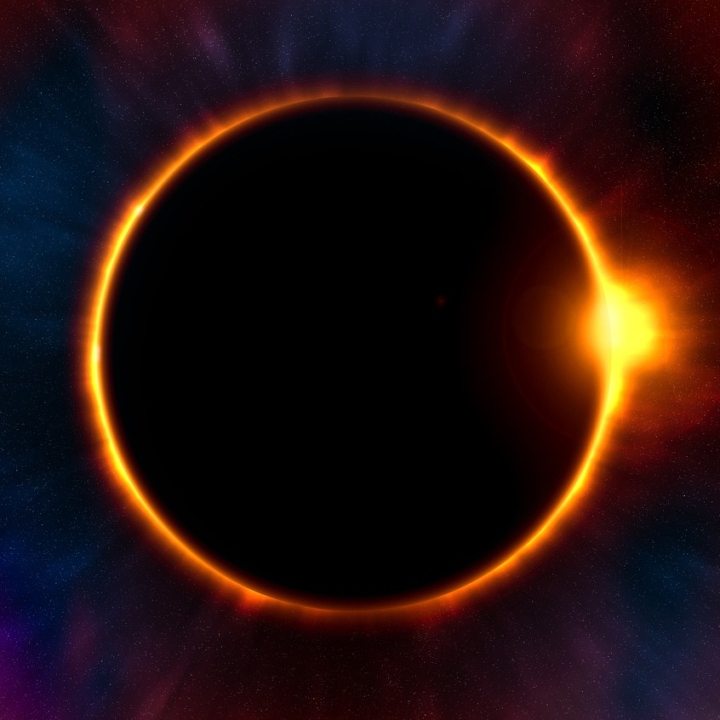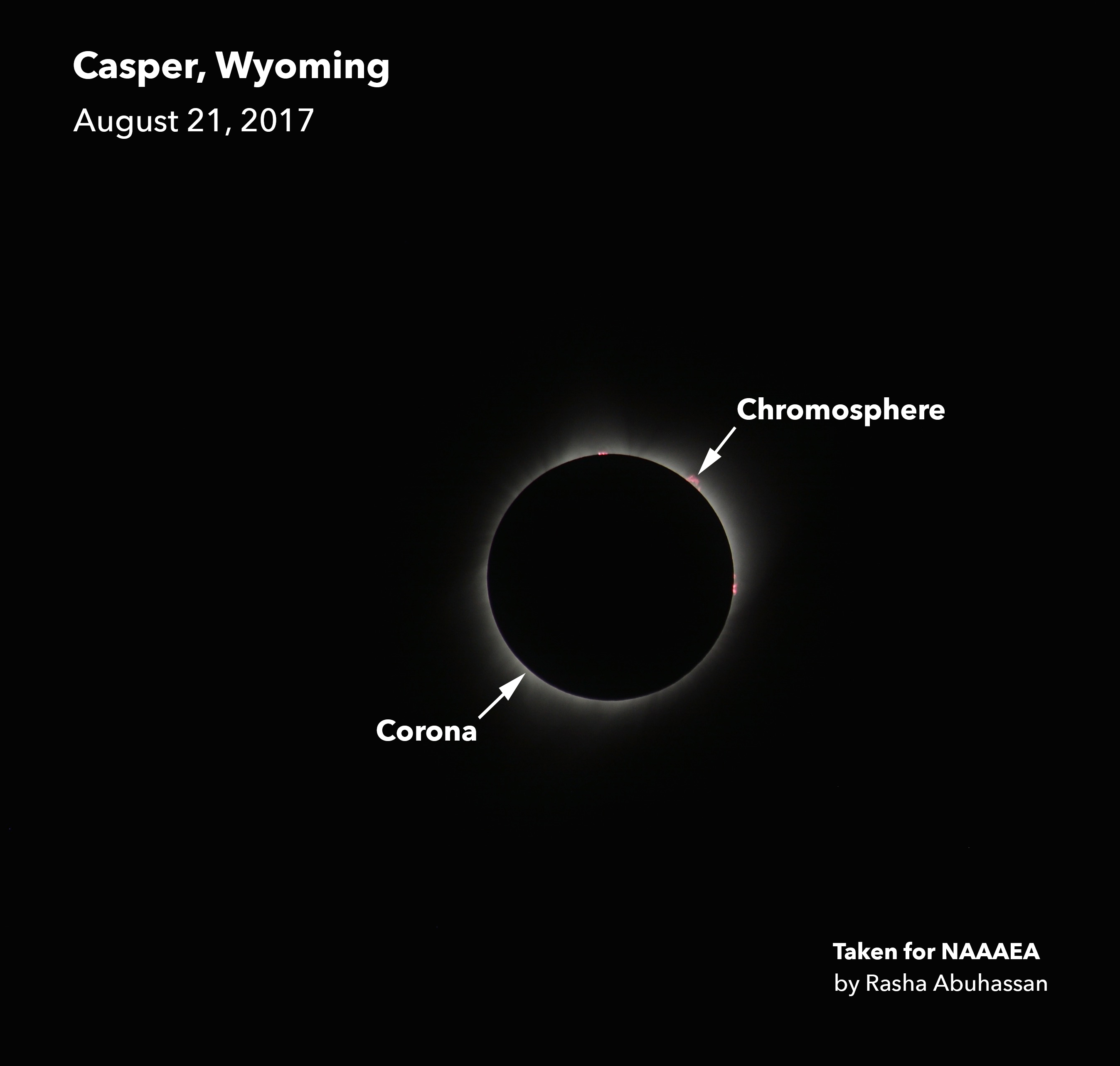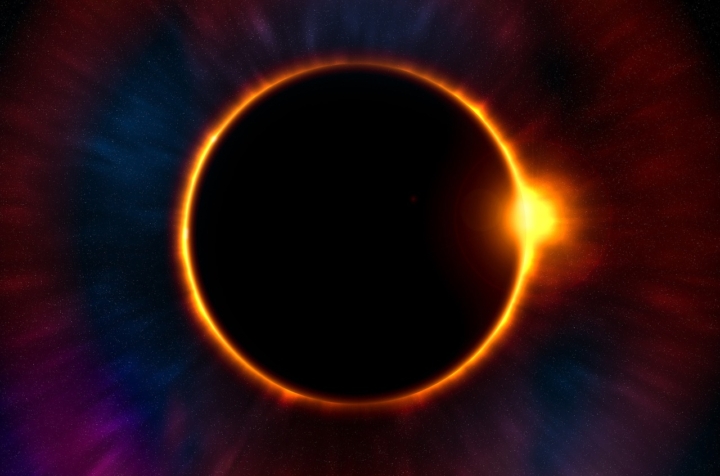2017 Solar Eclipse

Month: September 2017
Thank you Dr. Nader Abuhassan for providing us with the article below and our thanks also to Rasha Abuhassan for the beautiful pictures that she took and shared with NAAAEA.

Observing the August 21 eclipse from the line of totality from the ground and from space gave us a unique opportunity to perform an experiment that is related to the problem of how clouds affect the amount of the sun’s energy that reaches the ground and heats the planet. The proposed goal of this experiment is to test our ability to make 3 dimensional calculations of how sunlight behaves in the atmosphere when obscured by a finite object such as a cloud or the moon.
For a first step, the moon is much simpler to model compared to complex cloud shapes. We had already demonstrated that we could observe an eclipse transiting across the surface of the earth using the EPIC (Earth Polychromatic Imaging Camera) instrument onboard the DSCOVR (Deep Space Climate Observatory) located 1.5 million km from earth. Spacecraft (launched in February 2015).
Knowing that we could successfully observe the eclipse from space, we proposed to setup ground observations in Casper Wyoming and Columbia Missouri, both on the line of totality. The ground observations consisted of two Pandora Spectrometer Instruments, one pointed at the sun and the other pointed straight up at the sky. This gave us a measure of the amount of direct sunlight and the amount of sunlight scattering in the atmosphere. When the ground measurements are combined with the satellite data we have knowledge of how much solar energy reached the ground and how much is reflected back to space during the eclipse. The 3 dimensional radiative transfer calculation will try to match the observations. If successful, the results will be used to improve our capability of modelling clouds and their effect on the earth’s energy balance, so important for understanding the problem of climate change. The results are of importance because the ability to better predict climate change also provides the ability to predict changes in agricultural productivity and factors affecting human health.


